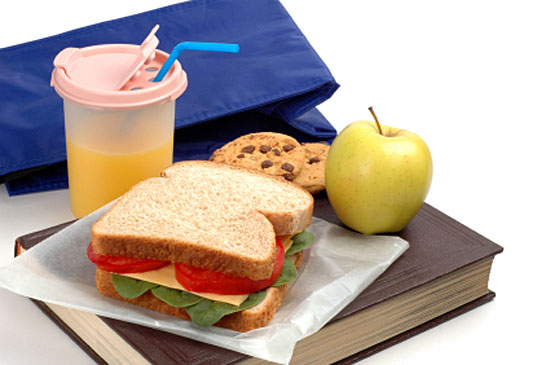
Written By: Sofia Layarda, MPH
Title: Master of Public Health
Alumni: University of California, Berkeley
Last Updated on:

With the imminent back-to-school rush comes the age-old question of what to pack for lunch. As families continue to adopt busier schedules, many of us resort to pre-packaged foods for our kids’ lunchboxes. Even though pre-packaged lunches may be convenient, many contain highly processed products that are full of food additives. While some food additives have a nutritive purpose, such as B-vitamins added to enrich white flour or folic acid added to breakfast cereals, many food additives used in our food system today serve only to preserve the food or enhance the food’s flavor, texture, or appearance.

Table of Contents
Sodium nitrite: Mostly found in cured meats and cold cuts such as bacon, turkey, ham, or hot dogs. Its main purpose is to prevent the growth of bacteria that cause botulism. Sodium nitrite leads to the formation of nitrosamines in foods, which are carcinogenic. Many nitrite-containing foods have ascorbic acid added to suppress the formation of nitrosamines. Even so, most products containing sodium nitrite are not nutritionally good choices since they tend to also be high in sodium, fat, or both.
BHA (butylated hydroxianisole) and BHT (butylated hydroxytoluene): both are antioxidants used in potato chips, oils, or some cereals to delay the rancidity of fats. Some studies suggest they may be carcinogens in the human body.
Acesulfame potassium (Acesulfame-K): used in baked goods, soft drinks, and some “diet” yogurts. There are concerns about it being a potential carcinogen.
Sucralose (Splenda): used in frozen desserts, sugarless baked goods, soft drinks, and sweetener packets. Is made by reacting table sugar (sucrose) with chlorine. Studies indicate it to be generally safe; however, in the food system it is often used in combination with Acesulfame-K.
Yellow 6, Blue 1, Red 40: all are synthetic dyes made from coal tar. Animal tests using Yellow 6 and Blue 1 suggest some cancer risk, while the tests on the health effects of Red 40 are not well-designed. Yellow 6 may also cause allergic reactions in some individuals. All three are often found in junk foods such as candy, sodas, and other sugary beverages.
High fructose corn syrup: This sweetener is used instead of sugar in many processed foods and sodas. While research to confirm the exact health effects is ongoing, it is clear that we could stand to consume less regular sugar and high fructose corn syrup. Foods that are high in high fructose corn syrup or sugar tend to contain empty calories and very little of any other nutrients.
Hydrolyzed vegetable protein: Often found as a flavor enhancer in instant soups, chilis, stews or processed meats, this product is obtained when protein from a vegetable source (such as soy) is broken down into its amino acids. A similar product obtained from dairy sources is hydrolyzed whey protein. It may cause reactions in individuals who are sensitive or allergic to the original source.
Partially hydrogenated vegetable oils: found mainly in processed baked goods and frozen ready-to-eat entrees. The main health concern associated with partially hydrogenated oils is the formation of trans fats, which adversely affect blood lipids. (Note that some forms of trans fats occur in nature, but do not have the same health effects as the trans fats resulting from partially hydrogenated oils.)
A homemade lunch does not have to be time-consuming or overly elaborate. Consider the following tips:
It is time to quit our addiction to highly processed, pre-packaged “convenient” lunches and the hidden food additives that come with them. Build time into your busy schedule to pack lunch for the whole family. Everyone’s health is worth the extra time and effort.
Alumni: University of California, Berkeley – Sofia believes in bringing back fun and pleasure into everyday eating. She loves cooking, and is constantly experimenting with ingredients, creating recipes and trying them out on family and friends. Her latest interest lies in finding realistic and practical ways of environmentally-friendly food/eating habits.
artificial sweeteners, food additives, high fructose corn syrup, kid's nutrition, partially hydrogenated oil, preservatives